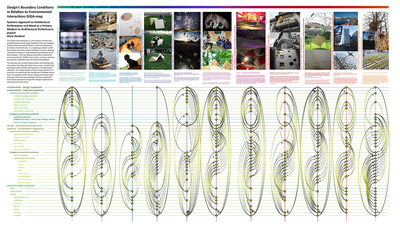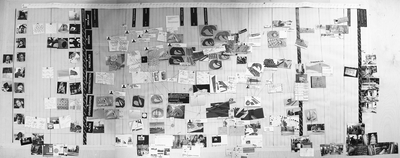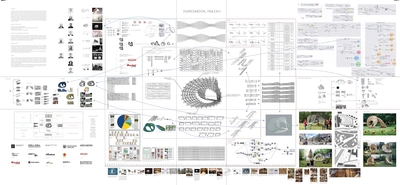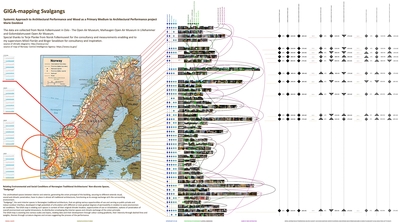Socio-environmental relations of non-discrete spaces and architectures: Systemic approach to performative wood
Davidova, Marie (2016) Socio-environmental relations of non-discrete spaces and architectures: Systemic approach to performative wood. In: Relating Systems Thinking and Design Symposium (RSD), 13-15 Oct 2016, Toronto, Canada.
Preview |
Text
Davidova_Architecture_GIGAmaps_2016.pdf Download (1MB) | Preview |
![Davidova_GIGA-Performance_2016.jpg [thumbnail of Davidova_GIGA-Performance_2016.jpg]](https://openresearch.ocadu.ca/1957/2.hassmallThumbnailVersion/Davidova_GIGA-Performance_2016.jpg)  Preview |
Image
Davidova_GIGA-Performance_2016.jpg Download (1MB) | Preview |
![Davidova_MD-Map44_2016.jpg [thumbnail of Davidova_MD-Map44_2016.jpg]](https://openresearch.ocadu.ca/1957/3.hassmallThumbnailVersion/Davidova_MD-Map44_2016.jpg)  Preview |
Image
Davidova_MD-Map44_2016.jpg Download (1MB) | Preview |
![Davidova_MDMap45_2016.jpg [thumbnail of Davidova_MDMap45_2016.jpg]](https://openresearch.ocadu.ca/1957/4.hassmallThumbnailVersion/Davidova_MDMap45_2016.jpg)  Preview |
Image
Davidova_MDMap45_2016.jpg Download (2MB) | Preview |
![Davidova_MD-GIGA-Svalgangs_2016.jpg [thumbnail of Davidova_MD-GIGA-Svalgangs_2016.jpg]](https://openresearch.ocadu.ca/1957/5.hassmallThumbnailVersion/Davidova_MD-GIGA-Svalgangs_2016.jpg)  Preview |
Image
Davidova_MD-GIGA-Svalgangs_2016.jpg Download (2MB) | Preview |
Abstract
The collection of GIGA‐maps for exhibition is setting into context my case study research of responsive wood located in Czech Republic, gluing together Systems Oriented Design with Performance Oriented Architecture. The series should serve as detailed illustration to the paper Socio‐Environmental Relations of Non‐Discrete Spaces and Architectures: Systemic Approach to Performative Wood, presented at the conference (Davidová, 2016).
First section are team work GIGA‐maps as a generator for design and public discussion of the LOOP pavilion prototype (Davidová & Prokop, 2016; Slavíčková, 2014) that were previously published in my paper for RSD3 (Davidová, 2014). The third GIGA‐map serves as analysing tool of traditional architecture and its use in relation of environment and social or human activities and the last one is setting the overall project Wood as a Primary Medium to Architectural Performance through Systems Oriented Design Approach into context of different interrelated interactive spaces’ boundary conditions, that are covered in the RSD5 paper. The collection relates transdisciplinary team design and fabrication processes and different personas and organisations involved in such, human, social and biotic behaviour with climatic and geographical data, addressing interactions in performance of architectures and its parasites in urban design. The first map served as a design and communication tool, where printed images and threads were involved in mapping and the constellation was several times reorganised in relation to the design needs. The second was created as a reflection and as a tool for communication of the complexity to public. It was exhibited next to the built pavilion prototype at EnviroCity festival (Davidová & Kernová, 2016; Kernová, 2014). Though being aware with the discussion that GIGA‐maps should not serve as a presentation tool, this case, especially in relation with the performing object, proved to do good job. These maps were referred to by Sevaldson as ‘action maps’ due to their active role (Sevaldson, 2016a). The other two I would call
‘analysing maps’ that serve as a reflection and therefore ground and argument for further design. They are focused on opportunistic activities, use or habitation of spaces and objects meets its performance through environment ‐ material and/or design interactions. Inspired by Library of Systemic Relations for GIGA‐mapping introduced by Sevaldson (Sevaldson, 2016b), the relationing of such in GIGA‐maps required its own coding or update and/or combination of the existing proposed library. The maps are expressing different ranges and intensities of behaviour or performance in relation to placement or designs that are represented by informational layer of images. Thus generating a matrix of interlinked information where zooming, sequencing or feedback looping appears. These thematic GIGA‐maps are in fact developed ZIP‐analyses (Sevaldson, 2016c) of each other, zooming a problem of the theme’s topic.
| Item Type: | Conference/Workshop Item (Poster) |
|---|---|
| Divisions: | Faculty of Design |
| Related URLs: | |
| Date Deposited: | 06 Sep 2017 15:57 |
| Last Modified: | 20 Dec 2021 16:17 |
| URI: | https://openresearch.ocadu.ca/id/eprint/1957 |
Actions (login required)
 |
Edit View |

 Tools
Tools Tools
Tools